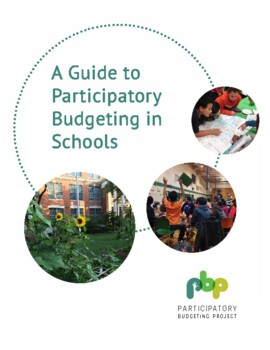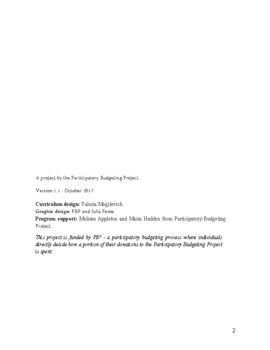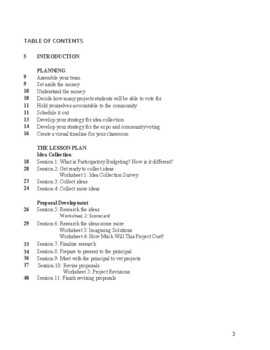Guide to Participatory Budgeting in Schools
- PDF
Description
So, you’re interested in doing Participatory Budgeting in your school. Great! This guide
will help you plan it.
Participatory Budgeting is a democratic process in which community members decide
how to spend a part of a public budget. In this case, the community members are
students—and even families, teachers, and staff—and the budget is the school
budget. Students collect ideas about the school’s needs, develop project proposals, and
vote on projects to fund. We know Participatory Budgeting is a mouthful, so we’ll
call it PB from now on.
The process was first developed in the city of Porto Alegre, Brazil in 1989. In Porto
Alegre, as many as 50,000 people have participated each year to decide as much as
20% of the city budget. Since 1989, PB has spread to over 3,000 cities in Latin
America, North America, Asia, Africa, and Europe. In the US and Canada, PB has been
used in Toronto, Montreal, Guelph, Chicago, New York City, and Vallejo (California).
Most of these PB processes are at the city level, for the municipal budget. PB has also
been used, however, for counties, states, housing authorities, schools and school
systems, universities, coalitions, and other public agencies.
We heard from a lot of people (through a PB process, actually) that they wanted help
bringing PB to their schools. We wrote this for educators and principals looking to
incorporate PB into their classrooms.
www.participatorybudgeting.org/schools





